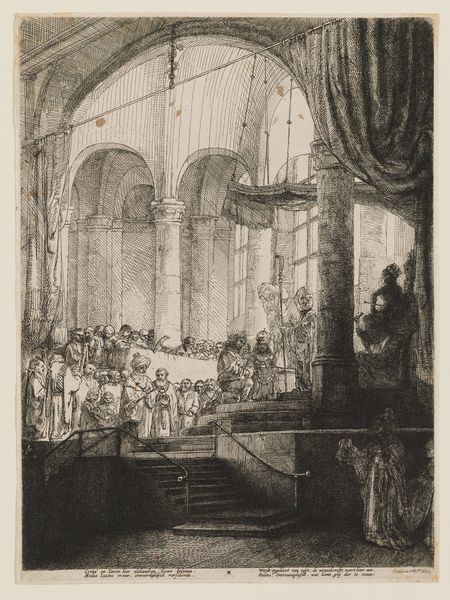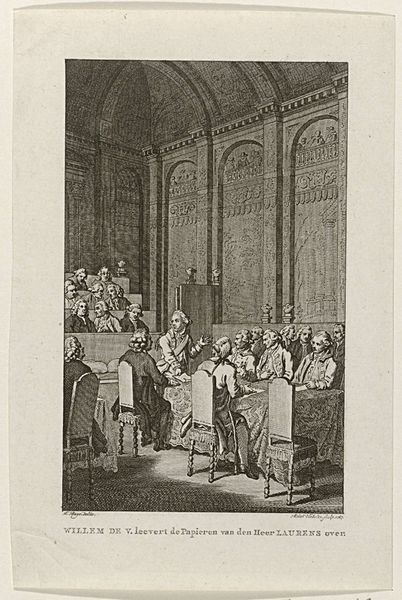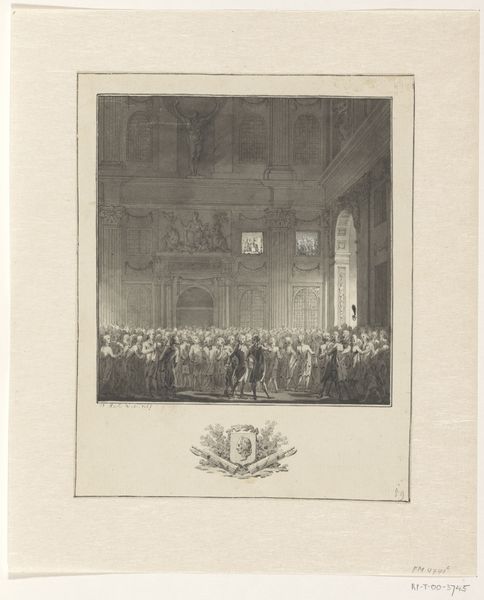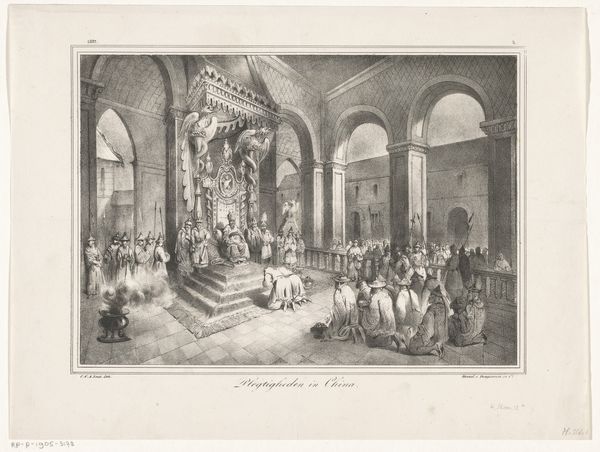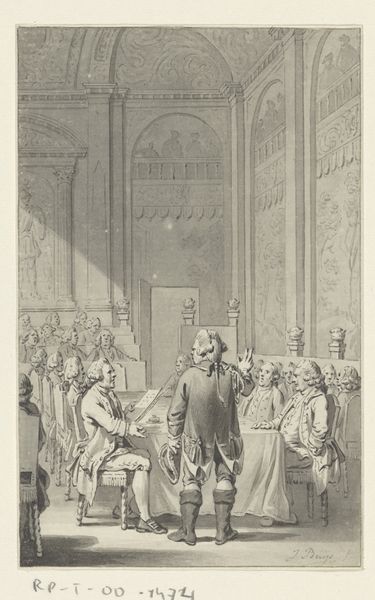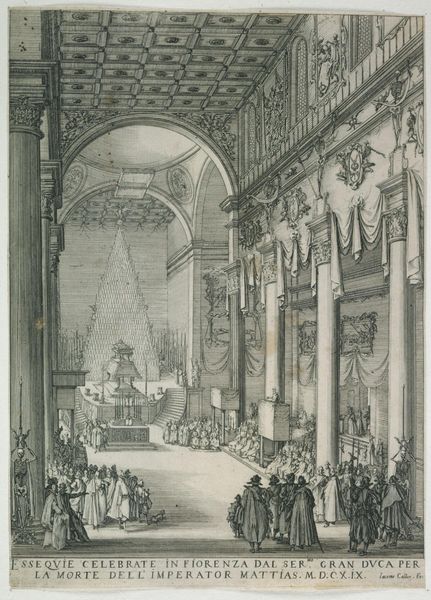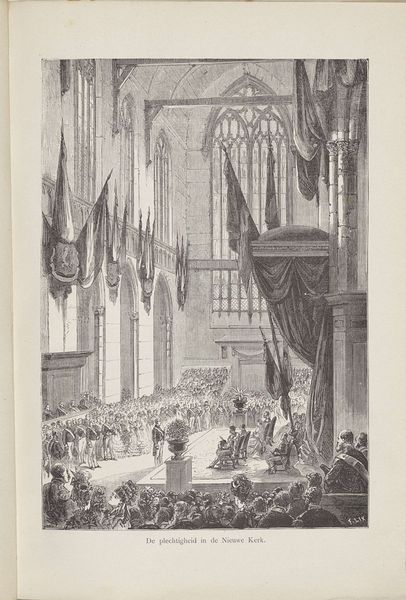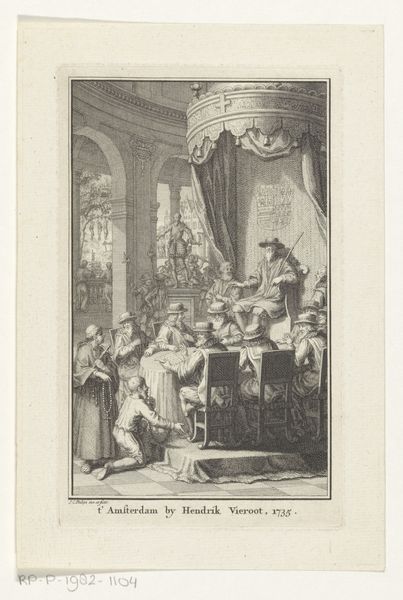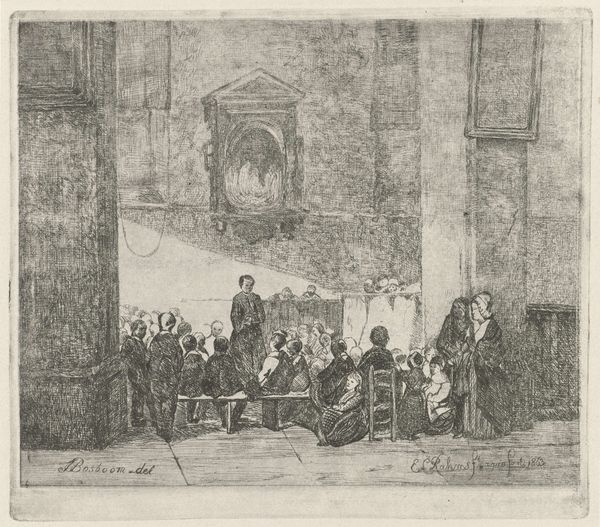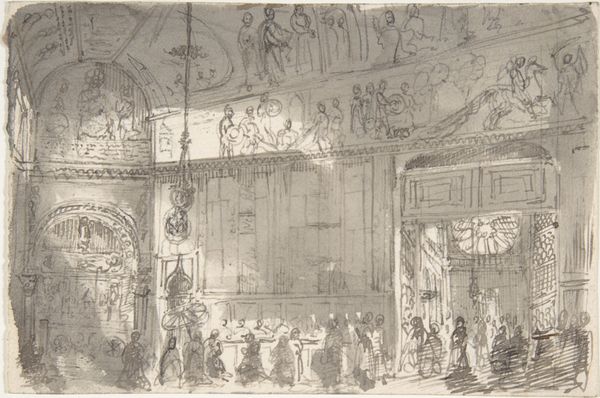
etching
#
narrative-art
#
baroque
#
etching
#
figuration
#
line
#
history-painting
#
monochrome
Copyright: Public domain
Curator: This is Rembrandt van Rijn's 1648 etching, "Medea or the marriage of Jason and Creusa." Editor: It’s surprisingly intimate for such a grandiose architectural setting! The line work, particularly on Medea herself, is so delicate it gives the scene a strange, almost dreamlike quality. Curator: It's interesting you say that. Consider the technical skill required for Rembrandt to evoke such intimacy using etching – a subtractive process involving metal plates, acid, and considerable physical labor. Editor: Yes, precisely! I can almost feel the pressure he applied, how deeply he understood the copper he worked on. What do you read in the composition? I find myself drifting, led by the darkness into those heavy archways. Curator: The heavy shadows are absolutely masterful and, to me, create an undeniable atmosphere of foreboding, as well as providing the depth from foreground to background in a non-painted artwork.. The story of Medea, betrayed and about to seek terrible revenge, absolutely carries through the use of shadow. Editor: Exactly, and it also emphasizes the sheer weight and oppressive presence of patriarchal structure, from royal marriages to vengeful acts of infanticide – made palpable by these material techniques of line and depth and shading, that give texture to the larger political economy that structures even an intimate scene. Do you think that is an appropriate interpretation, to understand these moments as sites of protest? Curator: The notion of it being a subtle critique of societal structures is persuasive. The figures on the margins, shrouded and obscured, are where some kind of personal power exists—but in response to overwhelming institutional forces. Editor: It brings me back to the making of it. Can you imagine Rembrandt in his studio, wrestling with this narrative through acid and metal, aware of his own place in a similarly oppressive system, questioning authority. Curator: In the final product there's such a raw sense of empathy that I think can be traced to the human struggles of creativity, especially the challenges of representing a woman wronged. Editor: Agreed. It’s a reminder that even through a rigid method such as etching, an artist can make these subtle emotional traces in line and shade that linger with us. Curator: And how social conditions weigh upon art creation at every turn. It brings so much richness to what could otherwise be a forgotten old master. Editor: Absolutely! Thanks for the extra light, to deepen my dark wandering of this masterpiece.
Comments
No comments
Be the first to comment and join the conversation on the ultimate creative platform.
